In this entry, we’re going to explain how to break down or factor a number to its prime numbers step by step.
Before we start anything, feel free to look at these entries where we explain what “factoring” means and what a prime number is so you can refresh your memory.
Now, let’s go ahead and break down numbers to their prime numbers.
We’re going to factor 12.
Step 1. Write the number that we want to factor next to a vertical line.
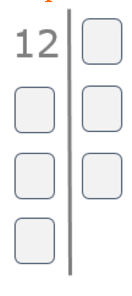
Step 2. Look for the smallest prime divisor of the number 12. In our example, that’d be 2.

Step 3. Divide 12 by 2 and then, write the answer underneath 12.
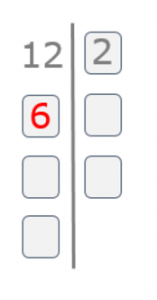
Step 4. Now, we just repeat. We’ll look for the smallest prime divisor of 6. It’s an even number, so the smallest prime number is 2, again, and we write it next to the 6.
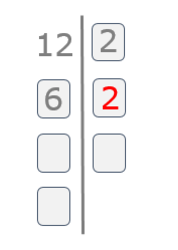
Step 5. We divide 6 by 2 and get 3, so we write it down underneath the 6.
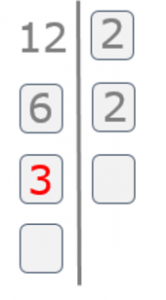
Step 6. Now, we need to repeat the steps again. What prime number is a divisor of 3? 3 itself.
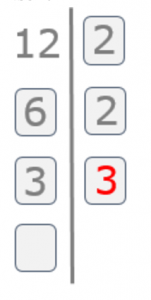
Step 7. We continue to divide 3 by 3 and get 1.
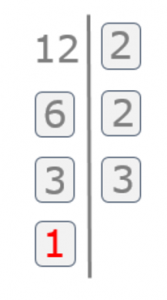
Step 8. The process ends when we reach 1. The second column is our answer.
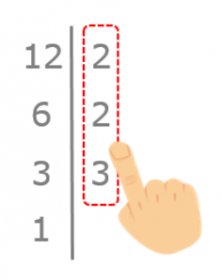
And now we can express our number as a multiplication of prime factors:
![]()
Simple, right? We can break down any number to its prime numbers by following the steps, regardless of how big it may be.
All numbers can be expressed as a multiplication of prime factors and the breakdown is different for every number.
Remember that at Smartick, you can learn to factor a number and all kinds of math content for children from 4 to 14. Make an account now and try it for free.
Learn More:
- Learn How to Factor into Prime Numbers
- What is Factorial Decomposition?
- Factorization: What Is It and How Is It Done?
- Greatest Common Factor (GCF): What It Is and How to Calculate It
- Learn How to Divide with 3-Digit Numbers







